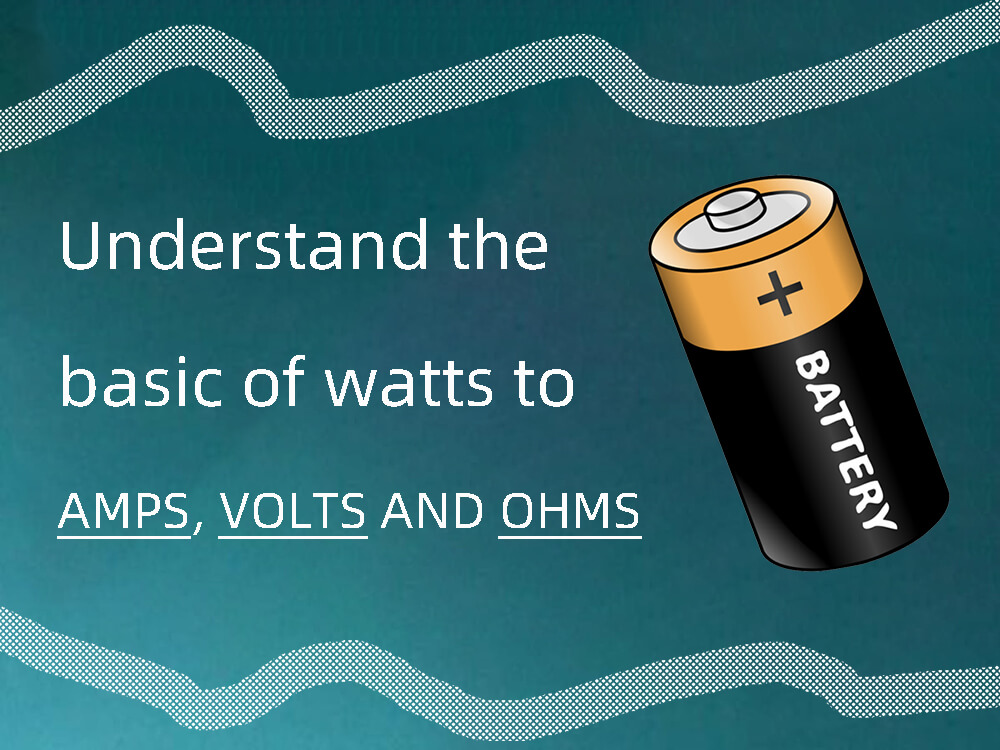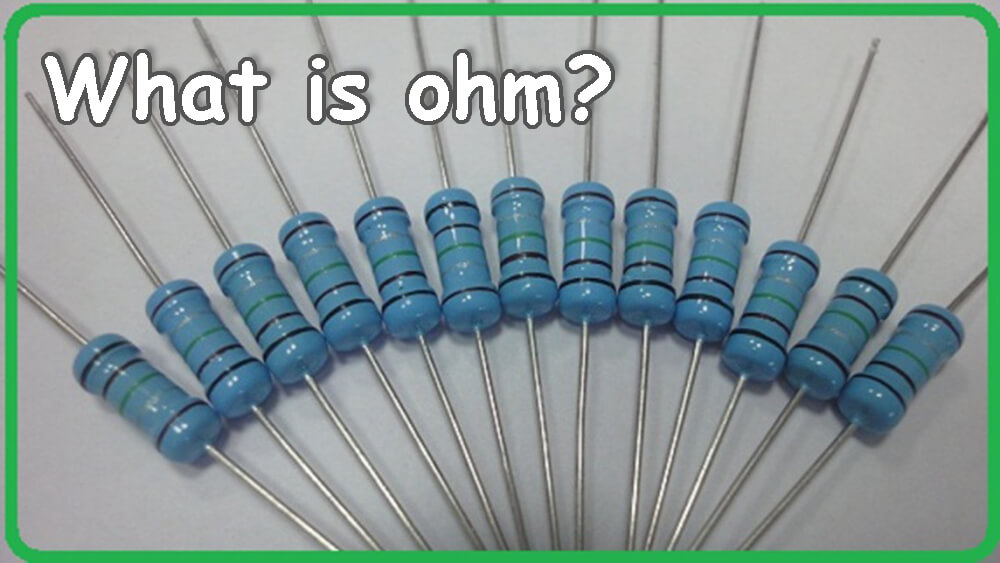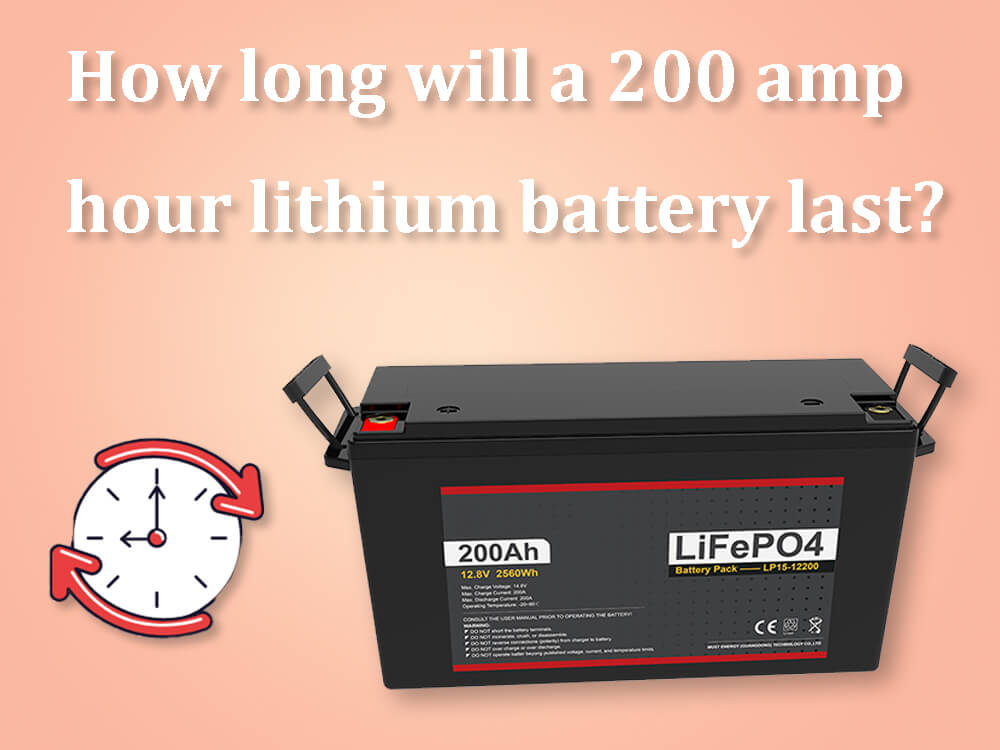Understand the basic of watts to amps, volts and ohms
- What is watt in electricity
- What is amp and amp hour
- What is a volt
- What is ohm
- Differences and relation between amps volts watts and ohms
- How to measure amp volts watts ohm
- Converting watts to amps and watts to amps
- How long will a 200 amp hour lithium battery last
- How to design a electrical system according to watts to amps
- How to work safely on electrical system
- FAQs

In this article, we’ll break down how to calculate, convert, and understand the basics of watts to amps as well as volts and ohms.
What is watt in electricity
In simple terms, a watt is a measure of the rate at which electricity or electrical energy is being used at a specific time. It is a simple measure of power that describes the amount of electricity on demand and supply at a specific moment. For instance, a 500-watt power tool draws 500-watts worth of electricity the moment it is switched on.
Watt-hours on the other hand describe the electricity rate(watt) measured in hours. Watt-hours gives the specifics of electricity consumption to hours.
What is amp and amp hour
Amp is a scale of measurement used in measuring the amount of electrical current in use. Otherwise known as Amperage, it measures the volume or quantity of electrical current flowing between 2 points of conduction.
Amp-hour is a measure of the amount of electrical current it takes to move 1 amp of current for 1 hour. It is denoted by the symbol “Ah” and simply shows how much amp a power source like a lithium battery can supply for an hour.
What is a volt
A volt which is represented by the letter “V” describes the electric potential difference of a power source. It is the ability of electrical current to travel from one point to the other with respect to resistance. For instance, the ability of a lithium battery to supply electrical energy with high or low resistance is the voltage rating of that battery.
What is ohm
In simple terms, ohm describes the resistance to the flow of electric current. It is the measure of resistance or opposition of a conductor to the passage of electrical current and is represented by Ohm.
In other words, one ohm equals the resistance of one amp of current with a potential difference of one volt in an electrical circuit.
Differences and relation between amps volts watts and ohms
Now that we’ve established what each of these units is and what they mean theoretically, it’s time to show how they differ and relate to each other. For example, watts to amps, volts to ohms, and vice versa.
Watts
As stated earlier, Watts equals the power rating of an electrical circuit. Therefore, an increase in wattage results in an equal increase in power which in actuality involves a relation between voltage and current flow.
To determine the power or wattage reading and capacity of a power source such as a lithium ion battery, it is standard to use the multiplication of voltage and current. In simple mathematical terms, Wattage is written as ( P = V × I).
Amps
As we’ve discussed, Amps determines the quantity and volume of electrical current that flows in a circuit or electrical system. It is a simple measure of the amount of current being used in a system.
In comparing watts to amps or watts to amps, amps or amperage is a product of both watts and volts in an electrical system. To determine the actual amp rating of a system, you need to simply divide the watt by the volt, such as ( A = W ÷ V).
Volts
Much like how we’ve discussed watts to amps, volts, or voltage rating can be done with a similar process. As stated earlier, the voltage of an electrical system like a lithium battery is determined by factors that include the relative size of the wires used in current transmission and the level of electrical resistance present.
This is extremely important because a voltage rating can determine how powerful current or electricity is being transmitted in a system. It could determine if a system is overloaded with current. The measurement of voltage is simply a result of current and resistance and is written as ( V = I × r).
Ohms
Ohms are determined as a result of all the measures of electricity mentioned earlier which includes watts to amps, and voltage as well. As stated, ohms is a simple measure of electrical resistance and overtime has been determined using Ohm’s Law as the standard means of derivation.
What this simply means is that different materials and metals used in wiring offer different levels of resistance and this resistance can be calculated as voltage divided by current which is ( R = V ÷ I).
How to measure amp volts watts ohm
Understanding how to correctly measure these units of electricity is very important in determining the proper use of electricity and can help you avoid overloading your system or appliances with too much power. From watts to amps and volts to ohms, these next few formulas should help you properly calculate your electrical needs.
Voltage
Voltage is simply the amount of energy supplied to an electrical unit and is denoted using the letter (V). For instance, an appliance that has a 12V rating will obviously need a battery or power source that supplies 12 volts worth of electricity. Batteries such as lithium batteries always have a certain voltage( 12V, 24V, and 36V), so a 24V device will need one 24V battery or two 12V batteries in series.
Amps
Amps describe the amount of electricity flowing through a circuit and amp-hour determines how much of that electricity or current flow in one hour. While the voltage rating of a device is usually fixed, other parameters like watts to amps can either go high or low depending on the setting of the circuit and current supply. For instance, if a 24V lithium battery has a capacity of 200Ah, this means the battery can supply 200 amps of current to a 24-volt appliance for 1 hour. It could also mean supplying the same 24-volt device 100 amps of current for 2 hours or 50 amps for 4 hours and so on.
Watts
Wattage is simply the amount of power a device can draw while watt-hour is the amount of current supplied or drawn in 1 hour. Wattage is simply a measure of volt multiplied by amperage ( W = V × A). For instance, to determine the power rating of a 12V power tool battery that draws 20 amps of current, you simply need to do, ( 12V × 20A) which would give you 240W worth of power. To determine the watt-hour capacity of say, a 12V50Ah lithium ion battery, you simply need to multiply the voltage rate by the amp-hour ( 12V × 50Ah) which gives you a 600Wh capacity. You’ve successfully converted voltage and amp-hours to watt-hours.
Ohms
Ohms simply denote resistance, and resistance can be calculated by simply multiplying voltage by current. For example, to find out the resistance of a 12V appliance supplied with 4 currents of energy you simply need to ( 12V × 4I) which would give you a resistance rating of 48 ohms.
Converting watts to amps and watts to amps
Converting one unit of energy measurement to another is fairly easy and all you need are the right figures which include voltage and the following formulas.
Watts to amps: Converting watts to amps you can use the following methods. If you need to determine the amperage of a 12V device rated at 600 watts, all you need to do is ( 600W ÷ 12V) which would give you an amperage of 50 amps.
Amps to watts: Converting amps to watts can be done with the following method. If you have a 24V appliance rated at 40 amps, all you need to do is ( 24V × 40A) which would give you 960 watts of electricity.
How long will a 200 amp hour lithium battery last
Since we’ve already established how to calculate for amp- hour, we can easily determine how long a 200Ah Lithium battery will last. A regular 12v 200ah lithium ion battery will supply a 12V device with 200 amps of energy for 1 hour. It can also supply 100 amps of energy for 2 hours and 50 amps for 4 hours and also 20 amps for 10 hours.
How to design a electrical system according to watts to amps
To properly design an electrical system, you need to calculate the energy consumption of all appliances, devices, and tools to be used in the system, you can do this by calculating the wattage by the number of hours the appliances will be used. You can convert the watts to amps if the former is not known. Secondly, you need to determine the power rating of the energy source like a lithium battery, to be used in the system, you can do this by calculating the voltage rating of the battery.
How to work safely on electrical system
Firstly, you need to know all the energy ratings of the electrical system, from the watts to amps, and volts to ohms. This would help you calculate the right parameters and not overload your system. Secondly, be sure to get the opinion of a professional before starting connections on the electrical system.
FAQs
Which is more powerful amp or watt?
In comparing watts to amps, amps are much easier to measure and calculate compared to watts and can be done by simply multiplying by voltage. But watts are more applicable to other forms of energy making them powerful and diverse as opposed to amps that only apply to electricity.
How many watts is a refrigerator?
Depending on the size, make and age of your refrigerator, most average home-sized refrigerators are rated around 250 to 500 watts and can be powered by a power source like a powerful lithium battery.
Does higher amperage mean higher watts?
Yes, if the voltage is fixed, a higher amperage usually means higher watts, and this is because since you need to multiply amps by voltage, the amperage would need to increase to result in a higher watt reading.




























